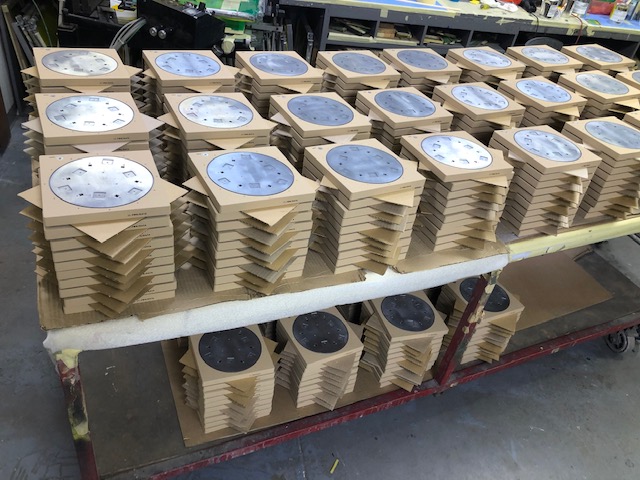MILITARY ∙ MEDICAL ∙ AEROSPACE ∙ ELECTRONICS ∙ SEMICONDUCTOR ∙ CONSTRUCTION
Passivation is a chemical process used to make a material, usually metal, less reactive with the environment, thereby increasing its resistance to corrosion. This is commonly applied to stainless steel and other corrosion-resistant alloys. The process typically involves cleaning the metal surface to remove contaminants such as free iron and then treating it with a mild oxidant, such as nitric acid or citric acid solution, to form a protective oxide layer on the surface.
Key Steps in the Passivation Process:
- Cleaning:
- The metal surface is thoroughly cleaned to remove any grease, oils, or other contaminants. This can be done using solvents, alkaline cleaners, or other appropriate cleaning agents.
- Pickling:
- The metal may be subjected to an acid bath to remove any surface impurities, oxides, or scale. This step is more aggressive than cleaning and is often used to prepare the surface for passivation.
- Passivation:
- The cleaned metal is treated with a passivating solution, typically nitric acid or citric acid, to remove any remaining free iron from the surface and to promote the formation of a thin, protective oxide layer. This layer enhances the metal’s corrosion resistance.
- Rinsing:
- The metal is thoroughly rinsed with deionized water to remove any residual acid or contaminants.
- Drying:
- The metal is dried to prevent any water spots or corrosion from developing.
Benefits of Passivation:
- Corrosion Resistance:
- By removing free iron and forming a stable oxide layer, passivation significantly improves the metal’s resistance to rust and corrosion.
- Extended Lifespan:
- Passivated metals have a longer service life in harsh environments due to their enhanced resistance to environmental factors.
- Cleanliness:
- The passivation process cleans the metal surface, reducing the risk of contamination in applications such as food processing, pharmaceuticals, and medical devices.
- Aesthetic Appearance:
- Passivation can improve the visual appearance of metals by giving them a clean, uniform finish.
Applications of Passivation:
- Aerospace:
- Critical components like fasteners and structural elements are passivated to ensure reliability and longevity.
- Medical Devices:
- Surgical instruments and implants are passivated to ensure they remain sterile and corrosion-free.
- Food and Beverage Industry:
- Equipment and containers are passivated to prevent contamination and ensure hygiene.
- Automotive:
- Various metal parts are passivated to enhance durability and resistance to environmental factors.
Conclusion:
Passivation is a crucial process for enhancing the durability and performance of metals, particularly in industries where corrosion resistance and cleanliness are paramount. By forming a protective oxide layer, passivation ensures that metals maintain their integrity and functionality over extended periods, even in challenging environments.


